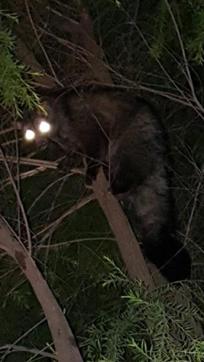Wildbuzz: Falcons face ISIS-style butchery
From the fanciers’ blinded viewpoint, the hapless raptor that has flown thousands of miles from the Arctic tundra to winter and feed in India is nothing more than a “flying wolf among their ‘bachhas’ (pigeons)”
Disturbing videos released online by Islamic State terrorists revel in the gory decapitation of humans. Nothing less than a ‘copy and paste’ model of such barbarism has caught popular fancy among rogue pigeon fanciers of Punjab. Irked by raptors such as the Shikra, Eurasian Sparrow hawk, and the migratory Tundra Peregrine and Laggar falcons preying on their expensive pigeons, the fanciers capture raptors and make videos that are posted on TikTok and YouTube. Some of these latest videos, which draw a huge number of views, ‘likes’ and ‘shares’, show gruesome beheading of the raptors or a muscular Punjabi hand wrenching off the falcon’s head. Pigeon fanciers also shoot down falcons and make videos of that illegal act.


To trap falcons, fanciers resort to a cunning method of watching the perch of a falcon high up on a mobile or electricity transmission tower. Knowing that the falcon will sit only at a particular point on the tower, the pigeon fancier lays a trap by climbing the tower or layers the falcon’s regular perch with glue. When the falcon returns to the perch, the hapless bird is trapped and the pigeon fancier climbs and retrieves the raptor for a gory slaughter video that has raunchy and hubristic Punjabi songs playing as a backdrop.
From the fanciers’ blinded viewpoint, the hapless raptor that has flown thousands of miles from the Arctic tundra to winter and feed in India is nothing more than a “flying wolf among their ‘bachhas’ (pigeons)”.
Raptors cannot be killed under India’s Wildlife (Protection) Act, 1972, and various migratory bird global treaties. I had provided evidence of raptor slaughter to the Union ministry of environment and forests and the Punjab wildlife preservation department in 2018. However, nothing seems to have changed on ground and the butchery continues unabated.
A SWEET TOOTH FOR MOONLIT GULAB JAMUNS
“O moon! Tell me how does it feel walking silently across the night sky alone? Are you not tired?” Can the moon ever tire of beaming its gentle smile on earth below and lighting the track for creatures of the dark? A most delightful discovery came the way of wildlife guards of the Sukhna Lake Nature Trail while on a night patrol. They focused their flashlights on a trio of Gular trees (Ficus racemosa). The upper branches came alive with scurrying creatures feasting on reddish-maroon Gular figs. On one tree there were as many as 10 Common palm civets (Bijjoo). When a flashlight is shone on a civet at night, its eyes shine like luminous pools of a full moon akin to those of a deer startled in car headlights.
The abundance of civets indicated good breeding and a viable Sukhna habitat. Another good news is the birth of three Chital (Spotted deer) fawns bolstering the very tiny population of this species that dwells along the Nature Trail. Senior officers of the forests and wildlife department were delighted when the sightings were reported up the chain of command.

The civet is a strange-looking creature that evokes comparison with a bear cub or a hybrid mongoose-cat. It is associated with unwarranted superstitions because it is seen so rarely during the day. Civets feed on mulberries and then Gular figs as the summer deepens. Ripening of Amaltas sweet pods after the golden showers brings a third sweetmeat in peak summer. The civets’ presence can be detected the next morning by their excreta dropped liberally under Amaltas trees.
The Gular is a ‘gulab jamun’ for wild creatures. Chhatbir zookeepers collect fallen figs, knowing that deer species nurture a proverbial ‘sweet tooth’. When Gular figs are put out for Mouse deer, Barking deer, Manipur Brow-antlered deer and Hog deer, the melee would be evocative of migrant children in a Covid quarantine being distributed free chocolates!



